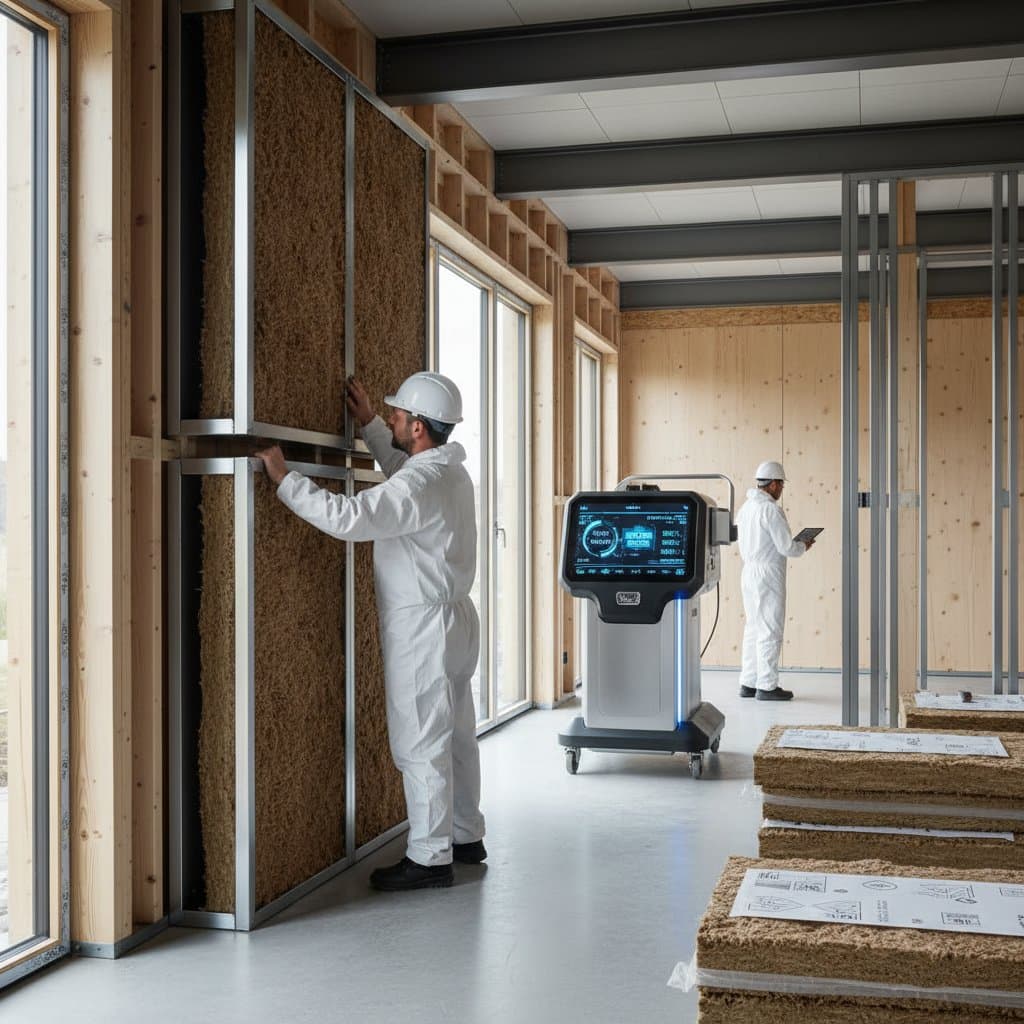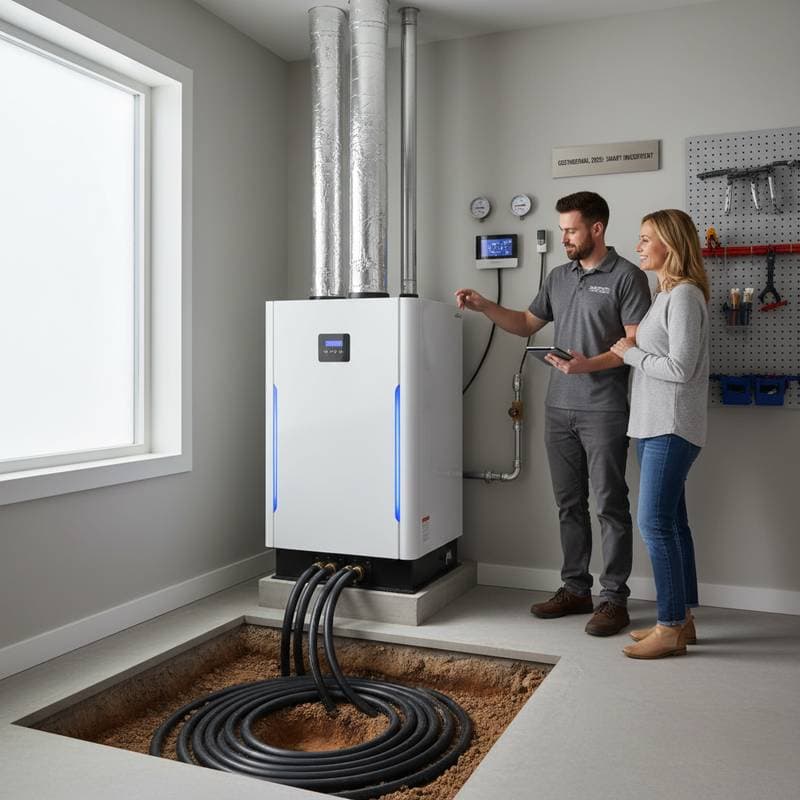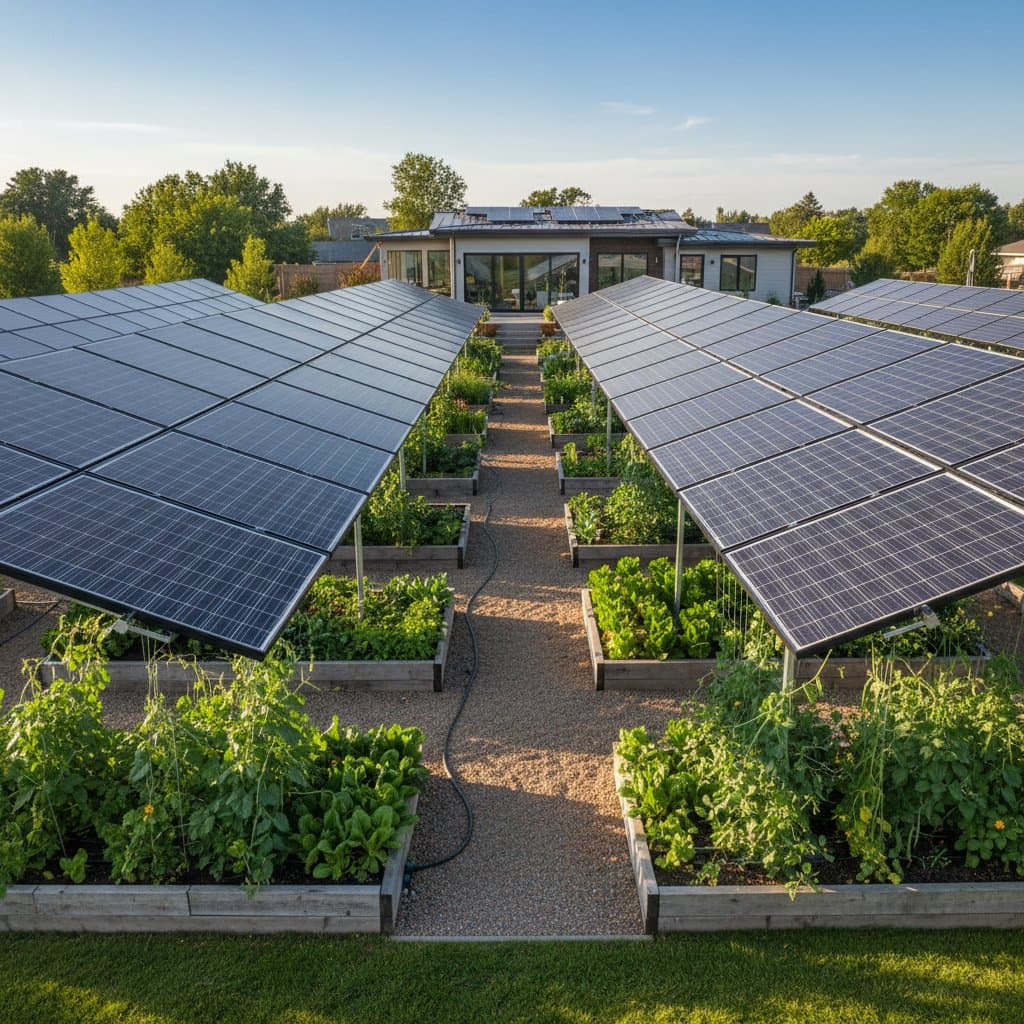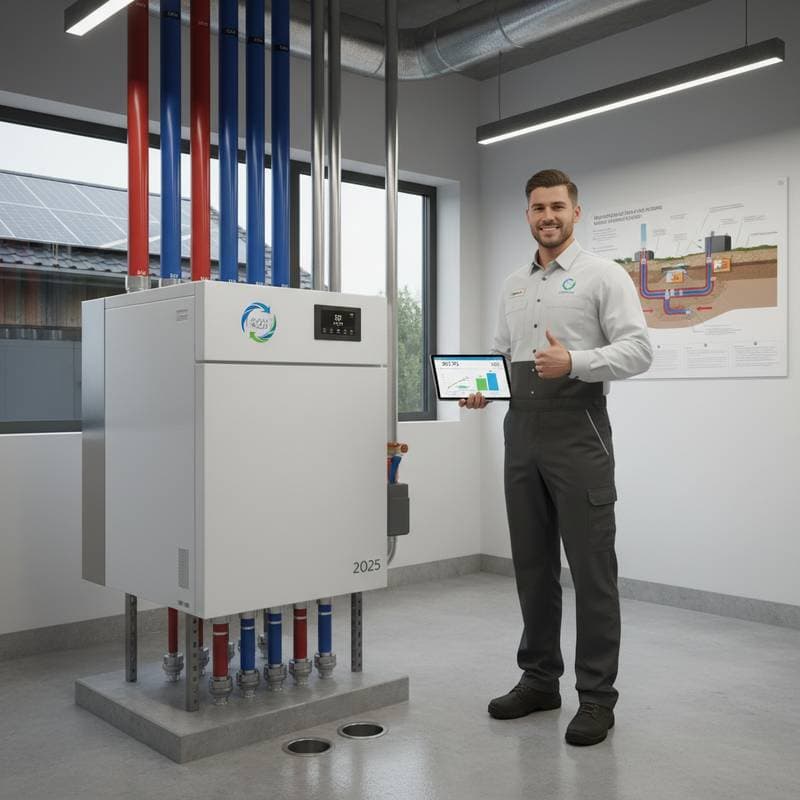Why Geothermal HVAC Systems Reduce Cooling Costs by 65 Percent in 2025
Summer heat waves strain traditional air conditioners, driving up energy bills significantly. Homeowners and building managers who adopt geothermal HVAC systems experience a notable shift: cooling expenses decrease by as much as 65 percent. The effectiveness of this technology stems from its efficient heat transfer and long-term financial advantages.
Key Advantages
- Cooling cost savings: Users of geothermal HVAC systems achieve reductions of 50 to 65 percent on cooling expenses relative to conventional setups.
- Energy efficiency: Geothermal heat pumps reach efficiency levels up to 400 percent, delivering four units of heating or cooling energy per unit of electricity consumed.
- Durability: Underground elements endure for approximately 50 years, with indoor components outlasting standard systems by a factor of two.
- Environmental impact: These systems lower household carbon emissions by over 40 percent.
- Financial incentives: Federal and local initiatives cover up to 30 percent of installation expenses, accelerating return on investment.
How Geothermal HVAC Systems Operate
Geothermal systems utilize the consistent underground temperature to regulate indoor climate. Unlike fluctuating outdoor air, the earth maintains steady conditions several feet below the surface. This stability enables geothermal heat pumps to move heat with greater efficiency than air-source alternatives.
Benefits of the Ground Loop
Central to the system is the ground loop, a series of underground pipes that circulate a water-based fluid. In winter, the fluid draws heat from the ground; in summer, it dissipates excess indoor heat into the earth. The moderate ground temperature minimizes the system's effort compared to traditional units that contend with extreme outdoor conditions.
Geothermal systems transfer existing heat rather than generate it anew. This principle requires substantially less electricity, directly contributing to reduced operational costs.
Function of the Heat Pump
Within the home, the heat pump unit manages heat exchange through a refrigerant process akin to that in a refrigerator. Components including the compressor, expansion valve, and heat exchanger collaborate to extract heat from the ground loop for warming or expel indoor heat to the ground for cooling. The earth's reliable temperature yields a coefficient of performance up to 4.0, providing four units of energy output per unit of input.
How Efficiency Leads to Financial Savings
High efficiency alone does not ensure bill reductions. Geothermal systems excel through consistent performance, low maintenance needs, and extended service life.
Consistent Energy Consumption Throughout the Year
Conventional air conditioners diminish in efficiency during peak heat, as they combat increasingly warm ambient air. Geothermal systems circumvent this issue, drawing from unchanging underground temperatures. Consequently, energy demands remain steady, avoiding surges that coincide with higher electricity rates in summer.
Minimized Component Wear
Geothermal units feature fewer elements exposed to the elements. The compressor and fan avoid dust, precipitation, and temperature fluctuations. This shielding extends operational longevity and decreases repair frequency, yielding cumulative savings in the hundreds or thousands of dollars.
Overall System Value
Initial installation expenses exceed those of standard systems, yet payback occurs within five to ten years via utility bill reductions. Savings persist thereafter for decades, with ground loops functioning for 50 years and requiring only one indoor unit replacement in that span.
| System Type | Average Efficiency (COP) | Typical Cooling Cost Savings | Lifespan (Years) |
|---|---|---|---|
| Air-Source Heat Pump | 2.5 | 25% | 15 |
| Geothermal Heat Pump | 4.0 | 65% | 25–50 |
These figures illustrate the superior energy and cost performance of geothermal HVAC over traditional options.
Evidence from Real-World Applications
The U.S. Environmental Protection Agency recognizes geothermal heat pumps as one of the most effective heating and cooling solutions. Research indicates energy use reductions of up to 44 percent versus air-source heat pumps and 72 percent against electric resistance heating paired with standard air conditioning.
Residential users frequently note monthly bill decreases of $100 to $300, varying by home size and habits. In commercial environments, extensive installations yield over 60 percent energy cost savings, attracting adoption in educational institutions, healthcare facilities, and corporate buildings.
Environmental Advantages
Geothermal systems offer more than economic benefits; they substantially lessen environmental harm. By primarily shifting heat with electricity rather than producing it from fossil fuels, they generate a reduced carbon profile.
Research from the National Renewable Energy Laboratory shows that substituting fuel oil or natural gas furnaces with geothermal alternatives cuts greenhouse gas emissions by over 40 percent. In areas with renewable electricity sources, reductions surpass 70 percent.
Harnessing underground thermal stability as a renewable resource advances sustainable and robust building practices.
Addressing Upfront Expenses
A primary hesitation regarding geothermal technology involves elevated initial costs, ranging from $18,000 to $30,000 for residential setups based on site specifics, soil composition, and loop design. Although higher than conventional air conditioning, incorporating savings and rebates alters the financial outlook considerably.
Available Incentives
Tax credits from government programs reach 30 percent of installation costs. Utility rebates add $500 to $2,500. Together, these measures can offset more than one-third of the outlay.
Funding Options and Recovery Time
Energy-efficient mortgages and low-interest green loans facilitate financing. With yearly savings averaging $1,500 to $2,000, systems recoup costs in five to eight years, followed by decades of net gains.
Investment Returns Over Time
Accounting for energy reductions and maintenance savings, annual returns often exceed 10 percent. Such performance enhances property value while curbing expenses.
Geothermal Versus Alternative Cooling Methods
| Feature | Geothermal HVAC | Air-Source Heat Pump | Central Air Conditioner |
|---|---|---|---|
| Cooling Efficiency | Very High | Moderate | Low |
| Energy Use | 25–35% of conventional AC | 60–70% of conventional AC | 100% baseline |
| Average Lifespan | 25–50 years | 15 years | 10–15 years |
| Maintenance | Low | Medium | High |
| Environmental Impact | Very Low | Moderate | High |
| Upfront Cost | High | Medium | Low |
This overview confirms that geothermal systems, despite higher entry costs, provide unmatched long-term efficiency and eco-friendliness.
Installation Essentials
Professional assessment and design are essential for geothermal setups. Loop type selection hinges on land availability, soil properties, and water resources.
Loop Design Choices
- Horizontal loops: Suitable for spacious properties, installed in shallow trenches.
- Vertical loops: Appropriate for limited areas, placed in deep boreholes.
- Pond or lake loops: Viable near water sources for optimal heat transfer.
A certified contractor evaluates sites to optimize efficiency and expense.
Preparation and Duration
Projects span days to weeks, influenced by terrain. Post-installation, systems run silently with basic care like filter replacements and inspections.
Ongoing Upkeep
Geothermal maintenance proves straightforward. Yearly checks of fluid levels, pump function, and thermostat settings suffice for reliability.
Steps to Adopt Geothermal Technology
Cumulative advantages include diminished bills, infrequent repairs, and reduced ecological impact. The earth's thermal resources offer a practical path to efficient cooling. Consult a specialist to assess your property and initiate the transition toward sustained comfort and savings.









